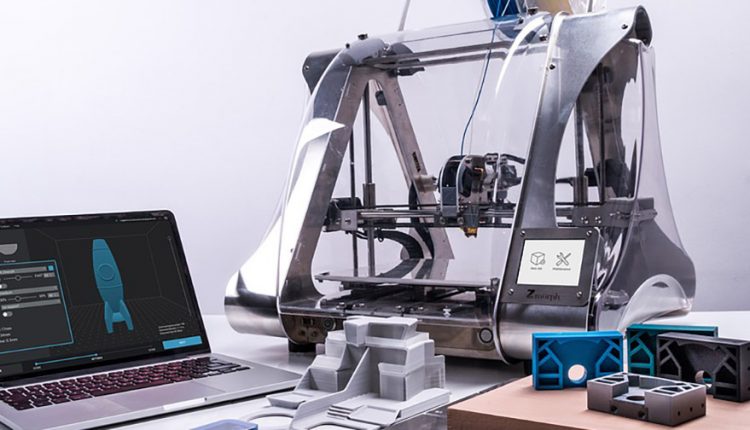3D Printing is Making Headway in Composite Manufacturing
Within the field of 3D printing, there is increasing emphasis on functionality as the industry shifts away from the stereotype of rapid prototyping, and materials are not exempt from such scrutiny.
For instance, within the field of metal additive manufacturing, metals such as titanium with excellent tensile strength and low density are ideal for lightweighting applications, and as such demand for these materials is continually increasing.
However, for certain applications, metals are not sufficiently lightweight enough, which is where composites come into play. The latest report from IDTechEx, ‘3D Printing Composites 2020-2030: Technology and Market Analysis’, authored by Dr Bryony Core and Dr Richard Collins examines the key trends and innovations in this emerging technology.
Carbon fiber reinforced thermoplastic polymers, or CFRP for short, are already established materials where a high strength to weight ratio is key; the aerospace industry, automotive and transportation, and luxury sporting goods, have all utilized CFRP for this specific property. Although 3D printing composites has been limited to date, this is to an extent a product of the inability of most additive manufacturing hardware systems to print continuous CFRP, as well as the propensity for increased nozzle wear.
Despite the difficulties previously encountered with 3D printing composites, new entrants to the market are increasing the awareness of how the advantages of 3D printing can complement and enhance the properties of a composite material. To date, the market has been dominated by Boston based start-up, Markforged, but their dominance is increasingly being challenged by established market leaders and other start-ups alike.
One such company is the Italian 3D printing company Roboze, which unveiled its large format Argo 500 printer in 2017, and has since been experiencing exponential growth rates in sales. Roboze doesn’t intend to stop there, and over the next year expects to quintuple production to keep up with demand from aerospace, motorsport, energy, and automotive industries. But what makes the Argo 500 so appealing?
Its FFF technology is compatible with high temperature, high performance polymers such as PEEK and Ultem, as well as being compatible with their own Carbon PEEK, or chopped carbon fiber PEEK filament. Watch out for Roboze at Formnext 2019, where they will be announcing new FFF 3D printers, new materials, and software which enables in-print monitoring and control.
The benefits of using continuous as opposed to chopped carbon fiber is the vastly increased strength to weight ratio that is achieved: chopped fibers tend to improve some of the material properties such as heat resistance, but the strength is largely determined by the matrix material, which is the thermoplastic. Markforged has developed software and hardware to specifically enable continuous fiber 3D printing, but as of 2019, they aren’t alone in the market anymore.
Anisoprint, a Skolkovo-based 3D printer manufacturer, are emerging as the first direct competitor to Markforged after they unveiled a new composite basalt fiber reinforced thermoplastic filament for use with their Anisoprint Composer. Having already developed their own continuous CFRP filament, Anisoprint turned their attention to basalt fiber. Basalt RFP is 15 times stronger than plastic, 5 times lighter than steel and 1.5 times stronger and lighter than aluminum. In addition, it is also radio transparent, making it ideal for non-conductive elements and insulators.
Finally, not to be outdone, 3D printing giants Stratasys have also engaged with the rapidly growing domain of composite 3D printing, and started shipping its Fortus 380mc Carbon Fiber Edition (CFE), priced at $70,000, in 2018. The Fortus 380mc CFE targets SME wishing to engage with composite 3D printing, but at a more affordable price point than Stratasys’ high end printers priced at $200,000. Stratasys have developed both an ASA and a Nylon12 filament infused with 35 wt% chopped carbon fiber.

